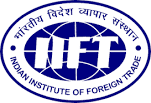Infra development drives demand for aluminum
The Aluminum Downstream Sector holds great potential as some of the major sectors with the Indian Railways’ US$113 billion investment commitment over the next five years focusing on enhancing safety of passenger cars, increasing speed of the trains and driving energy and cost efficiency.
The Rail development program leads the sector’s growth plans especially where aluminum is used in abundance, according to a survey by the Indian Institute of Foreign Trade (IIFT).
The plans also have transport sector aiming to decrease CO2 emission by faster adoption & manufacturing of Hybrid/Electric Vehicles (FAME Scheme) and several other measures, said the IIFT survey released on 16 Mar 2021.
The survey indicates that the demand for aluminum is going to rise in India to support the country’s industrial vision of achieving 25% of GDP from manufacturing by 2022 under the “Make in India” initiative and as a result of increasing urbanization, development of industrial corridors, rural electrification, smart city projects, housing for all, and various other infrastructural projects.
“We have used secondary data analysis to provide an overview of the Indian Aluminium industry vis-à-vis global aluminum industry and assess the challenges faced by the Indian aluminum downstream sector and its potential along with ITC Trade Map data to explain and analyze the trade structure of the domestic aluminum industry,” said Anil Agarwal, Patron, ASMA (Aluminum Secondary Manufactures Association).
“In order to analyse the dynamics of the aluminum industry after India signed FTAs with some supplier countries and India’s duty structure, we used customs tariff data from various sources including Central Board of Indirect Taxes (CBDT) and Supply-Use Table,” he said.
The study also discusses the rising requirement of “green” properties of the aluminum and awareness of the climate change related requirement to assess the future path for Indian Aluminum industry while World Integrated Trade Solution (WITS) SMART analysis has been conducted to build a hypothetical scenario to import high quality primary aluminum in India at lower tariffs with the reference case of Russia.
Aluminum is the most abundant, naturally occurring metal in the earth’s crust in the form of bauxite ore. The aluminum industry is one of the essential sectors for countries to modernize as the metal is lightweight, durable and infinitely recyclable.
It serves many areas of application in the economy and is likewise vital to both the industrial and consumer sectors. On the industrial front, aluminum is mainly used in machinery, electrical power transmission equipment, construction and transport, said the survey.
Aluminum is regarded as a strategic sector for India to move forward. It would support India to boost fuel and cost efficiency, especially in the Transportation, Electrical & Electronics, Building & Construction sector.
As per NITI Aayog report of 2018, Aluminum will help India to serve its commitment to CO2 emission norms by adopting electric vehicles, which improves the share of renewable energy to 40% and beyond and promotes indigenization in defence equipment, aerospace, and aviation sectors.
An IBEF 2019 report says that the Aluminum industry is the second most important metallurgical industry in India. Over the course of the last four years, India’s aluminum production capacity has increased to 4.1 million MT, driven by investment worth Rs.1.2 lakh crore (US$18.54 billion). In 2019, India was the fourth largest producer of aluminum in the world with a share of around 5.33% of the global aluminum output. #manufacturing #production #infrastructure #investment #projects /fiinews.com










